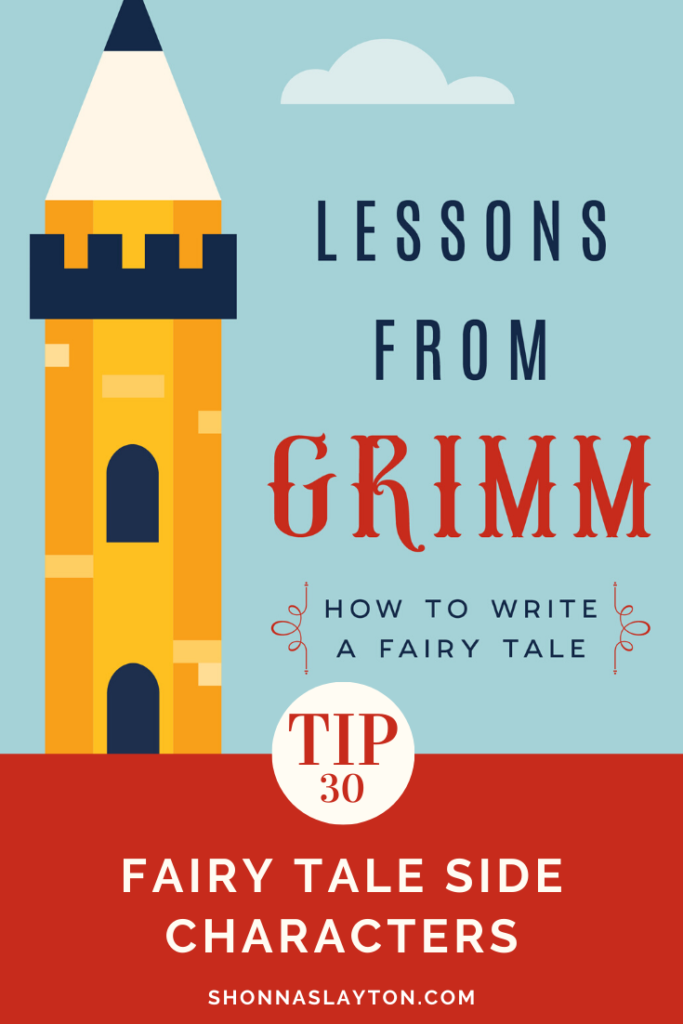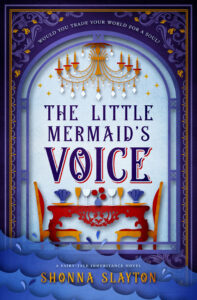Most of the time we focus on the main characters in the story, but side characters, secondary characters, sidekicks, etc. add so much to a tale. Whether they’re bringing comic relief or a plot twist, we love our side characters.

This week, in the story The Three Army Surgeons, the entire plot flips on the careless actions of a side character and her attempt to fix her mistake.
I don’t remember if any other Grimm story we’ve read so far has a minor character affect the plot like this. Oh, the poor maid. She’s in love and the consequences are hilarious. And morbid. Because this is Grimm.
In this story, three army surgeons boast they can cure anything:
“Just show me for once in a way what you can do,” said the host. Then the first said he would cut off his hand, and put it on again early next morning; the second said he would tear out his heart, and replace it next morning; the third said he would cut out his eyes and heal them again next morning. “If you can do that,” said the innkeeper, “you have learnt everything.”
So, forget for a moment that a person can’t live overnight without a heart. This is quite a show of skill the surgeons are giving the innkeeper. Are they too proud and confident in their abilities?
Well, as it turns out. They know something we don’t know.
They, however, had a salve, with which they rubbed themselves, which joined parts together, and they carried the little bottle in which it was, constantly with them.
However, in fairy tales, characters learn lessons, and those who are proud are often humbled. And humbled by the lowly.
Enter the love-sick maid.
This is my favorite part.
Then they cut the hand, heart and eyes from their bodies as they had said they would, and laid them all together on a plate, and gave it to the innkeeper. The innkeeper gave it to a servant who was to set it in the cupboard, and take good care of it.
The girl, however, had a lover in secret, who was a soldier. When therefore the innkeeper, the three army-surgeons, and everyone else in the house were asleep, the soldier came and wanted something to eat. The girl opened the cupboard and brought him some food, and in her love forgot to shut the cupboard-door again; She seated herself at the table by her lover, and they chattered away together.
While she sat so contentedly there, thinking of no ill luck, the cat came creeping in, found the cupboard open, took the hand and heart and eyes of the three army-surgeons, and ran off with them.
What happens next raises the bar of slap-stick comedy in a fairy tale. The maid and the soldier conspire together to obtain a hand, a heart, and a pair of eyes from various locations and creatures, which the surgeons then unknowingly attach to their own bodies in the morning. Consequences ensue.
What of our maid? She runs off after she’d been found out, never to be seen again.
So, what writing lessons can we learn from this Grimm fairy tale?
- Don’t ignore side characters and the impact they can have. The maid almost steals the show in this story, but not quite. She’s there for a short time to affect the plot, and then the story is back on to the main characters.
- Give side characters their own story. Our maid was happily spending time with her boyfriend and totally not paying attention to the weird science experiment going on with the innkeeper and the surgeons. When she tries to recover from her mistake, her goal is not to make the surgeons whole (which is their story goal) but to hide what she did and hopefully get away with it.)
- Try using multiple POV characters. In young adult books, conventional wisdom says to stick to one POV character, and that first person POV is the most popular. If that advice had been applied to this story, we would never have had this delightful scene with the maid and the soldier. Our POV character would have gone to sleep and then woken up unsuspecting. To clue the reader in that something strange had gone on in the middle of the night, the author would have to drop hints such as: the maid acting all nervous, trying to stop the surgeons from putting their body parts back on, or she could outright hand over the tray and then run for it. The story would still work with one POV character, but readers were given a fun scene that built greater anticipation over what would happen to the main characters.




